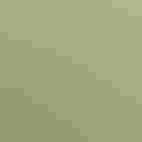Pyrrhuloxia
At a Glance
This 'desert cardinal' is common in dry country of the Southwest. It is similar to the Northern Cardinal in its song and behavior, and the two overlap in many desert areas. However, the Pyrrhuloxia can tolerate drier and more open habitats; it is less sedentary and more social than southwestern Cardinals, with flocks often wandering away from nesting areas in winter. The odd name 'Pyrrhuloxia,' formerly part of this bird's scientific name, combines the Latin term for the Bullfinch with a Greek reference to the bird's bill shape.
All bird guide text and rangemaps adapted from Lives of North American Birds by Kenn Kaufman© 1996, used by permission of Houghton Mifflin Harcourt Publishing Company. All rights reserved.
Category
Cardinals, Perching Birds
IUCN Status
Least Concern
Habitat
Arroyos and Canyons, Desert and Arid Habitats, Forests and Woodlands, Shrublands, Savannas, and Thickets
Region
Southwest, Texas
Behavior
Flitter, Formation, Undulating
Population
3.000.000
Range & Identification
Migration & Range Maps
Not truly migratory, but strays often show up outside breeding range during fall and winter, and flocks regularly winter in areas not occupied during nesting season.
Description
7 1/2-8 1/2" (19-22 cm). Male gray and red, female buff with slight red tinges, with thin spiky crest. Separated from female Northern Cardinal by bill shape and color: thick, curved, stubby bill is dull yellow to yellow-orange.
Size
About the size of a Robin, About the size of a Sparrow
Color
Gray, Red, Tan, Yellow
Wing Shape
Rounded
Tail Shape
Notched, Rounded, Square-tipped
Songs and Calls
A series of whistled notes, similar to those of Northern Cardinal, but thinner and shorter.
Call Pattern
Falling, Rising
Call Type
Chirp/Chip, Rattle, Whistle
Habitat
Mesquites, thorn scrub, deserts. Present at all seasons in dense brush in very dry country, including mesquite groves, desert washes, lower stretches of arid canyons, dry plains with mesquite and acacia scrub, streamside brush in desert regions. In winter, also wanders into open woods, forest edges, hedgerows in farm country.
Sign up for Audubon's newsletter to learn more about birds like the Pyrrhuloxia
Behavior
Eggs
3-4, sometimes 2-5. Pale grayish white to greenish white, spotted with brown and gray. Incubation is by female only, about 14 days. Male often feeds female on nest during incubation period.
Young
Both parents bring food for the nestlings. Young leave the nest about 10 days after hatching.
Feeding Behavior
Forages mostly while hopping on ground; also does some foraging up in shrubs and low trees. Except when nesting, often forages in small flocks.
Diet
Mostly insects, seeds, berries. Diet is varied. Feeds on many insects, including beetles, caterpillars, grasshoppers, and many others, also other arthropods. Eats many seeds, including those of weeds and grasses, and also frequently eats mesquite seeds. Feeds on berries and wild fruits, including cactus fruits. Will come to feeders for sunflower seeds.
Nesting
Male sings in spring to defend territory; at beginning of breeding season, both male and female may actively chase intruders of their own species. In courtship, male often feeds female. Nest: Placed 4-15' above the ground, usually in a thorny shrub or low tree, sometimes within a clump of mistletoe. Nest (built mostly or entirely by female) is an open cup made of thorny twigs, weeds, grass, strips of bark, lined with rootlets, plant fibers, fine grass.
Conservation
Conservation Status
Surveys indicate slight declines in population, probably as a result of habitat loss, but still widespread and common.
Climate Threats Facing the Pyrrhuloxia
Choose a temperature scenario below to see which threats will affect this species as warming increases. The same climate change-driven threats that put birds at risk will affect other wildlife and people, too.













